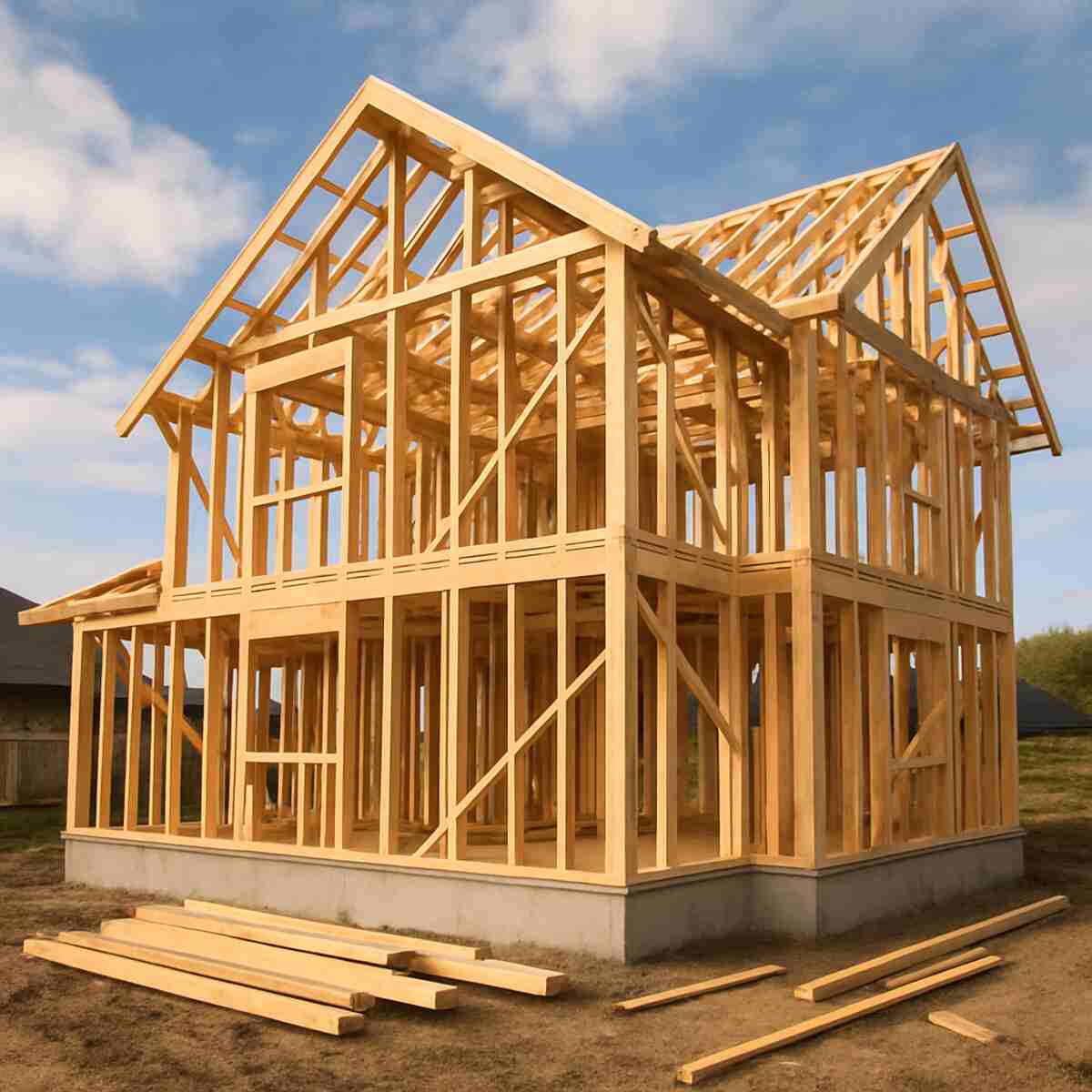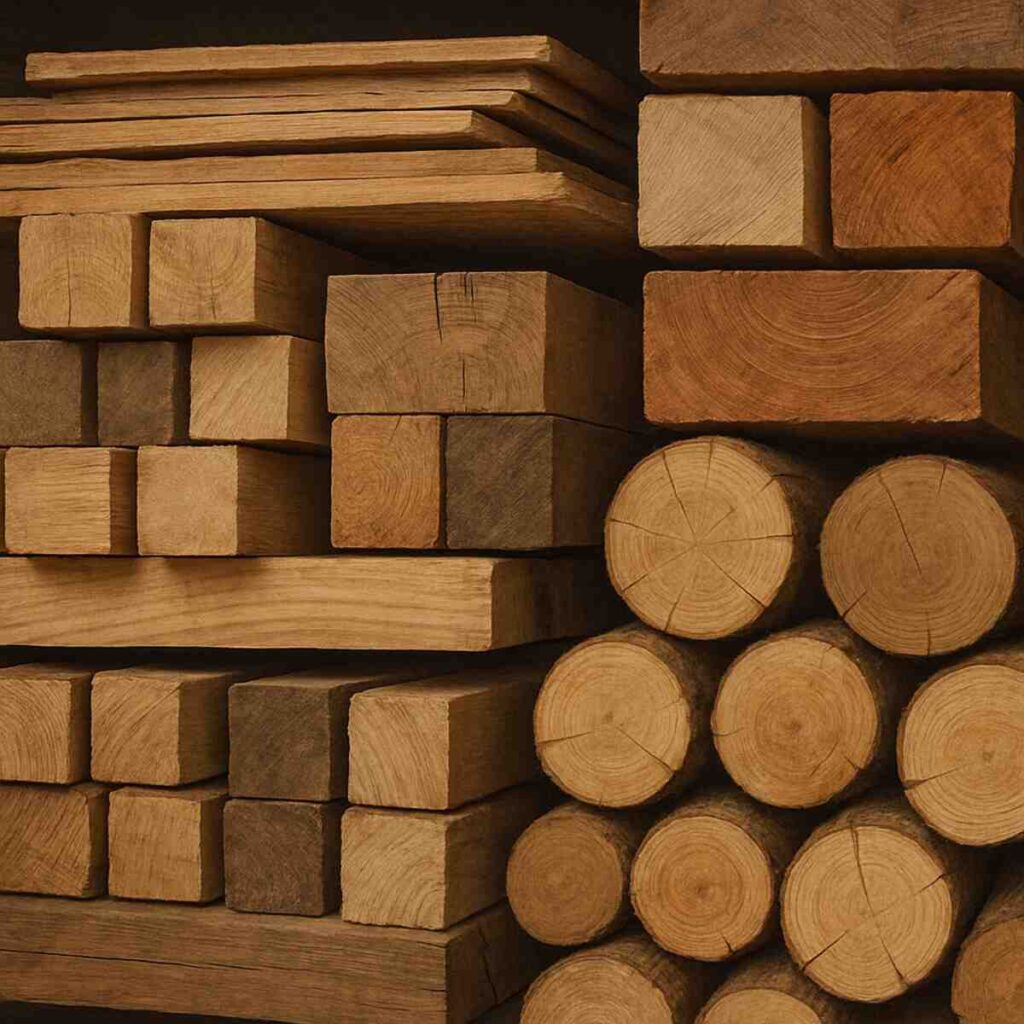Choosing the Best Timbers for Framing

Timber frame construction is a traditional building method that uses heavy timbers to create a sturdy, beautiful, and durable structure. It’s like the skeleton of a building, providing support and shape. Just as a well-structured plot supports a novel, a well-constructed timber frame supports a building. Select the best timber frame kits.
Historical Background
Timber framing has been around for centuries, with roots tracing back to ancient civilizations. The use of timber as a primary building material can be seen in the medieval structures of Europe and the ancient temples of Asia. This historical context highlights the timelessness and reliability of timber as a construction material. Understanding the heritage of timber framing can inspire modern builders to incorporate traditional techniques with contemporary designs.
Modern Applications
In today’s world, timber frame construction is enjoying a resurgence. Modern architects and builders appreciate its aesthetic appeal and environmental benefits. The flexibility of timber allows for innovative designs that can range from rustic cabins to sleek, modern homes. As green building practices become more popular, timber framing offers an environmentally responsible choice that doesn’t sacrifice style or strength.
Structural Benefits
The structural benefits of timber frame construction are numerous. Timber frames can support heavy loads, making them ideal for large spans and open spaces without the need for interior load-bearing walls. This creates a versatile interior layout that can be customized to meet the needs of any homeowner. The natural thermal properties of timber also contribute to energy efficiency, helping to maintain a comfortable indoor climate throughout the year.
Why Choose Timber Frame Construction?
The choice to use timber framing often boils down to a few reasons: aesthetics, sustainability, and strength. A timber-framed home has a rustic charm and a natural look that many people find appealing. Plus, timber is a renewable resource, making it an environmentally friendly choice. And let’s not forget its strength-timber frames have been used for centuries and have stood the test of time.
Aesthetic Value
Timber framing offers unparalleled aesthetic value. The exposed beams and intricate joinery create a unique visual appeal that blends seamlessly with natural surroundings. The warmth and texture of wood bring a sense of comfort and coziness to any space. Customization options, like choosing different finishes or incorporating artistic elements, allow homeowners to create a truly personalized living environment.
Environmental Sustainability
Choosing timber for construction supports sustainability efforts. Timber is a renewable resource that, when harvested responsibly, has a lower carbon footprint than other building materials like steel or concrete. Forest management practices, such as selective cutting and reforestation, ensure that timber remains a sustainable choice. Additionally, timber’s natural insulation properties can reduce energy consumption, contributing to an eco-friendly home.
Longevity and Durability
Timber frames are known for their longevity and durability. Many historic timber-framed buildings still stand today, a testament to their resilience. The natural strength of timber, when combined with modern preservation techniques, can extend the life of a structure. This durability makes timber an excellent investment for homeowners looking to build a lasting legacy.
Key Considerations When Choosing Timbers for Framing

When it comes to picking timbers for your project, there are several factors to consider. Much like selecting the right words for your story, choosing the right wood involves understanding its properties and how they align with your needs.
Durability
Durability is crucial. You want a timber that can withstand the elements and last for years. Some of the best options include Douglas Fir, Southern Yellow Pine, and Western Red Cedar. These woods are known for their strength and resistance to decay, making them ideal for framing.
Resistance to Elements
Durability often relates to how well the timber can resist natural elements like moisture, pests, and temperature fluctuations. Woods like Western Red Cedar are naturally resistant to decay and insect damage, making them ideal for outdoor applications. Proper treatment and maintenance can further enhance the durability of your chosen timber, ensuring it stands the test of time.
Structural Integrity
The structural integrity of timber is paramount in framing applications. The density and grain pattern of wood affect its load-bearing capacity and overall strength. Hardwoods generally offer more strength but can be more challenging to work with. It’s essential to balance strength with workability to meet the specific needs of your project.
Longevity in Use
Consider how long the timber will maintain its structural and aesthetic qualities. Certain woods, when properly maintained, can last for decades without significant deterioration. Understanding the expected lifespan of your chosen timber can help you make an informed decision about the best investment for your project.
Workability
Workability refers to how easy the wood is to cut, shape, and assemble. If you’re a beginner, you might want to start with a wood that’s easy to work with, like Douglas Fir or Spruce. These woods are softer and more forgiving, allowing you to learn and grow as you work through your project.
Ease of Handling
The ease of handling timber is an essential consideration, especially for DIY builders. Softer woods like Douglas Fir are more forgiving and easier to manipulate with standard tools. Understanding the tools required and the skill level needed to work with different timbers can help you choose the best option for your project.
Joinery and Fastening
The type of joinery and fastening methods you plan to use can influence your choice of timber. Some woods are more amenable to traditional joinery techniques, while others may require special fasteners. The compatibility of the timber with your chosen construction methods can affect both the ease of construction and the final appearance of the structure.
Adaptability in Design
Timber’s adaptability in design allows for creative expression in your building project. The flexibility to carve, stain, or paint timber means you can tailor the look and feel to match your vision. This adaptability makes timber an attractive option for custom designs and unique architectural features.
Aesthetic Appeal
Just as a good story captivates readers with its engaging plot and characters, a beautiful timber frame can captivate the eye. Consider the wood’s color, grain, and texture. White Oak, for instance, offers a lovely, rich color and a strong grain pattern that adds character to any structure.
Visual Characteristics
The visual characteristics of timber, such as color and grain, play a significant role in the overall aesthetic of your building. Different species offer distinct visual qualities that can complement or contrast with other materials in your design. Evaluating the color palette and grain pattern of available timbers can help achieve the desired look for your project.
Natural Patina
Over time, timber develops a natural patina that adds depth and character to the material. This aging process can enhance the beauty of the wood, giving your structure a timeless appeal. Understanding how different woods age can help you choose a timber that will continue to look beautiful as it matures.
Harmonizing with Surroundings
Aesthetic appeal is also about how well the timber harmonizes with its surroundings. Consider how the chosen wood will look in the context of the landscape and other architectural elements. Timber’s natural beauty can help create a seamless transition between indoor and outdoor spaces, enhancing the overall harmony of your design.
Popular Types of Wood for Framing
Let’s take a closer look at some popular choices for timber framing:
Douglas Fir
Douglas Fir is a favorite among builders for its strength, ease of use, and availability. It’s a versatile wood that works well for both structural and decorative applications. Plus, its light color and straight grain make it a visually appealing choice.
Strength and Versatility
Douglas Fir is renowned for its high strength-to-weight ratio, making it suitable for various structural applications. Its versatility extends to decorative uses, where its straight grain and light color provide a clean, modern look. Builders appreciate Douglas Fir’s ability to combine functionality with aesthetic appeal.
Availability and Cost
The availability and cost of Douglas Fir make it an attractive option for many projects. As one of the most commonly used timbers in North America, it’s widely available, which can help keep costs down. This accessibility makes Douglas Fir a practical choice for both small and large-scale projects.
Suitability for Different Climates
Douglas Fir’s adaptability to different climates makes it a reliable choice for builders in various regions. Its natural resilience to moisture and temperature changes ensures stability and longevity, even in challenging environments. This adaptability contributes to its popularity in diverse construction applications.
Southern Yellow Pine
Southern Yellow Pine is another strong contender. It’s known for its high strength-to-weight ratio, making it a great option for heavy loads. It’s also relatively affordable and widely available, making it a practical choice for many builders.
Load-Bearing Capacity
Southern Yellow Pine is prized for its exceptional load-bearing capacity. This strength makes it ideal for applications requiring significant structural support, such as beams and joists. The ability to handle heavy loads without compromising structural integrity is a key advantage of this timber.
Economic Considerations
The economic considerations of Southern Yellow Pine include its affordability and availability. As a widely grown species, it offers a cost-effective solution for builders seeking strong, reliable timber. The balance between price and performance makes it an appealing choice for budget-conscious projects.
Regional Growth and Sustainability
Southern Yellow Pine’s regional growth and sustainability contribute to its appeal as a construction material. The extensive growth in the southeastern United States ensures a steady supply, supporting local economies and reducing transportation-related environmental impacts. Sustainable forestry practices further enhance its environmental credentials.
Western Red Cedar
Western Red Cedar is prized for its natural resistance to decay and insects, which makes it perfect for outdoor applications. Its rich, reddish-brown color and pleasant aroma add to its appeal, making it a popular choice for those looking to add a touch of elegance to their projects.
Natural Resistance
Western Red Cedar’s natural resistance to decay and insects is one of its most significant advantages. This inherent durability makes it an ideal choice for outdoor structures, such as decks, pergolas, and siding. The wood’s ability to withstand the elements without requiring chemical treatments is a major selling point for environmentally conscious builders.
Aesthetic Elegance
The aesthetic elegance of Western Red Cedar is unmatched, with its rich, reddish-brown color and distinctive aroma. Its visual appeal enhances any structure, whether used for cladding, roofing, or interior finishes. The timeless beauty of Western Red Cedar makes it a preferred choice for projects where appearance is paramount.
Versatility in Application
Western Red Cedar’s versatility extends to a wide range of applications, both structural and decorative. Its workability allows for intricate designs and detailed craftsmanship, making it suitable for custom projects. The combination of beauty, durability, and versatility ensures that Western Red Cedar remains a favorite among architects and builders.
Tips for Working with Timber
Working with timber is an art form in itself. Here are some tips to help you along the way:
Plan Ahead
Before you start cutting, take the time to plan your project. Measure twice, cut once, as the saying goes. This will save you time and resources in the long run.
Detailed Project Planning
A successful timber project begins with detailed planning. Create comprehensive blueprints or sketches to visualize the final structure and identify potential challenges. Careful planning also involves selecting the right timber species and calculating the required quantities to avoid material shortages.
Time Management
Effective time management is crucial in timber framing. Allocate sufficient time for each stage of the project, from preparation to construction and finishing. Factor in potential delays and adjust your schedule accordingly to ensure a smooth workflow and timely completion.
Resource Allocation
Resource allocation involves securing the necessary tools, materials, and labor before starting your project. Ensure that all resources are readily available to prevent interruptions and maintain momentum. A well-organized workspace contributes to efficiency and safety during construction.
Invest in Quality Tools
Good tools make all the difference. Invest in quality saws, chisels, and drills to make your job easier and more enjoyable.
Tool Selection
Selecting the right tools is essential for successful timber work. High-quality saws, chisels, and drills ensure precision and ease of use, reducing the risk of errors and accidents. Consider investing in specialized timber framing tools designed to handle specific tasks with greater efficiency.
Maintenance and Care
Proper maintenance and care of your tools prolong their lifespan and performance. Regularly clean, sharpen, and lubricate your tools to keep them in optimal condition. Well-maintained tools improve the quality of your work and enhance the overall construction experience.
Safety Considerations
Safety should always be a priority when working with timber. Use appropriate protective gear, such as gloves, goggles, and ear protection, to minimize the risk of injury. Familiarize yourself with tool safety procedures and best practices to create a safe working environment.
Practice Patience
Just like writing, timber framing requires patience and persistence. Take your time, and don’t rush the process. The end result will be worth it.
Developing Skills
Developing skills in timber framing takes time and practice. Start with smaller projects to build confidence and gradually tackle more complex designs. Embrace mistakes as learning opportunities and seek guidance from experienced builders to improve your craftsmanship.
Attention to Detail
Attention to detail is crucial in achieving a high-quality finish. Meticulously check measurements, alignments, and joinery to ensure precision and structural integrity. Taking the time to get the details right will enhance the overall quality and longevity of your project.
Enjoying the Process
Enjoying the process of working with timber is just as important as the final result. Appreciate the creativity and craftsmanship involved in transforming raw materials into a finished structure. The satisfaction of creating something beautiful and lasting is a reward in itself.
Conclusion
Choosing the best timbers for framing is about more than just picking a wood that looks good. It’s about understanding the properties of different woods and how they fit into your project. Whether you’re constructing a building or crafting a story, the right foundation makes all the difference.
So, as you embark on your timber framing journey, remember to consider the durability, workability, and aesthetic appeal of the wood you choose. And most importantly, enjoy the process. After all, building with timber is an opportunity to create something beautiful and lasting-much like writing a great novel. Happy building!
